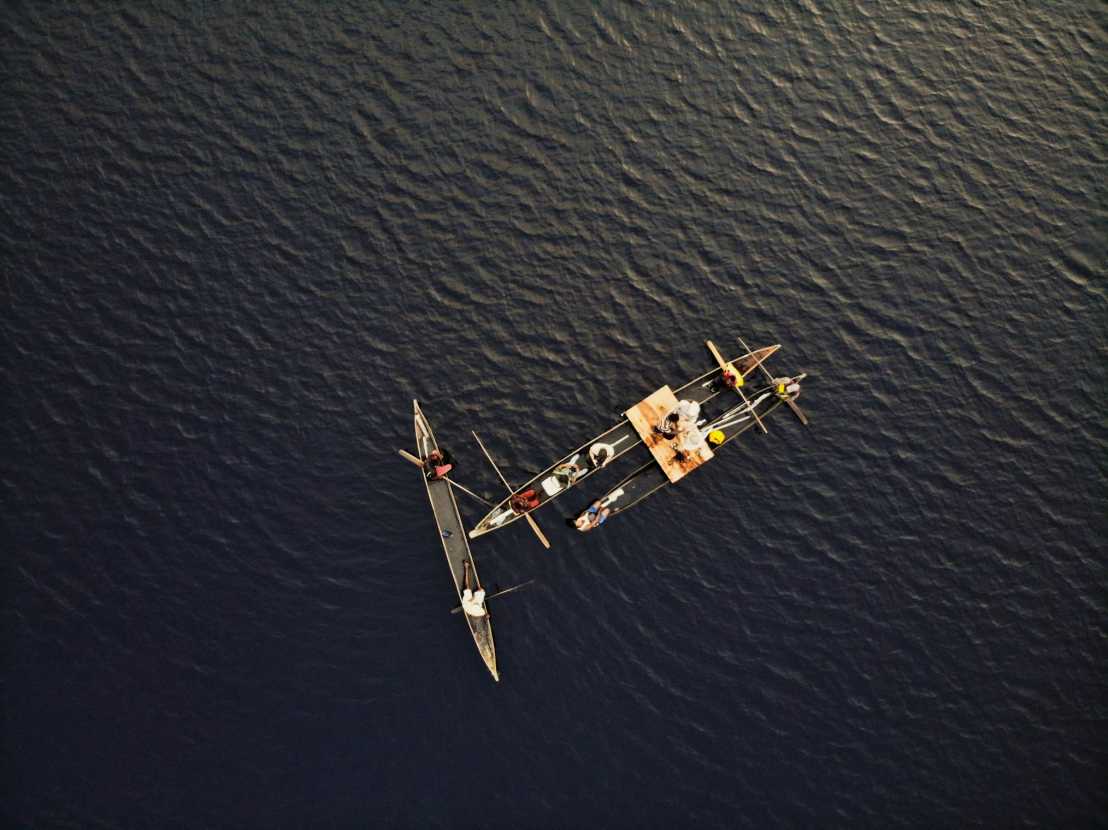Tropical Soil Erosion Dynamics (TropSEDs)
Unraveling the roles of climate and land-use on the erosional transfer of carbon from source to sink through time in the Kasaï Basin.

Soils contain large quantities of organic carbon (OC) that has built up over long periods of time as a result of plant decomposition, microbial activity, and the mechanical and chemical breakdown of rocks. When forests are cut down, farmers plow soils, or intense rains fall, this OC can be eroded and transported from soils onto lower hillslopes and river channels. Rivers can then carry this eroded material downstream and redeposit it in other low-lying areas near the riverbanks known as floodplains. Along the way, microbes that live in soil, rivers, or floodplains can consume this OC and turn it into carbon dioxide (CO2), which is then released into the atmosphere and acts there as a greenhouse gas. Importantly, other processes that occur simultaneously can counterbalance this release of CO2 to the atmosphere. For instance, the regrowth of new plants on eroding soils will return some atmospheric CO2 to the soil, since plants use CO2 taken from the air to grow. Furthermore, clay particles in the soil can form bonds with the OC and thereby partly protect it from microbial consumption.
Content and goal
By investigating both the physics and the chemistry of soils and sediments, the TropSEDs project will explore how these various processes interact—both today and over the past 6000 years—and will determine the overall amount of CO2 produced or consumed by erosion in the Kasaï Basin of central Africa, a tropical river basin that spans various climatic, geologic, and human-impacted zones. Little is known about how erosion affects the movement and fate of OC in the tropics, which have unique soils, climates, geologies, and land-use trajectories compared to the much more studied temperate zones. To accomplish this study, our team will use two 800 km boat cruises to sample sediments in rivers, floodplains, ancient lake bottoms, and soils along the Kasai River to measure the amount of OC, assess age of the OC and sediments, and examine the clay types. These measurements will then be used to perform and refine computer simulations of Earth’s surface processes. With these new models, we will be able to fully explore the life cycle of OC as it is transported from soils (“source”) to its final destination in sediment deposits (“sink”) or the atmosphere. In addition to modern environments, TropSEDs will reconstruct how carbon cycling responded to past climate conditions, which are known to have shifted dramatically about 6000 years ago when large areas of rainforest disappeared in central Africa.
Scientific and societal context
Altogether, this project will help define the major controls on the erosional carbon-cycle and allow scientists to predict how future changes, either in the form of agricultural land-use conversion or climate shifts, will alter the movement and fate of tropical soil OC.
Contact Persons
Evolution der Erdoberfläche
Sonneggstrasse 5
8092
Zürich
Switzerland
Institut für Agrarwissenschaften
Universitätstrasse 2
8092
Zürich
Switzerland